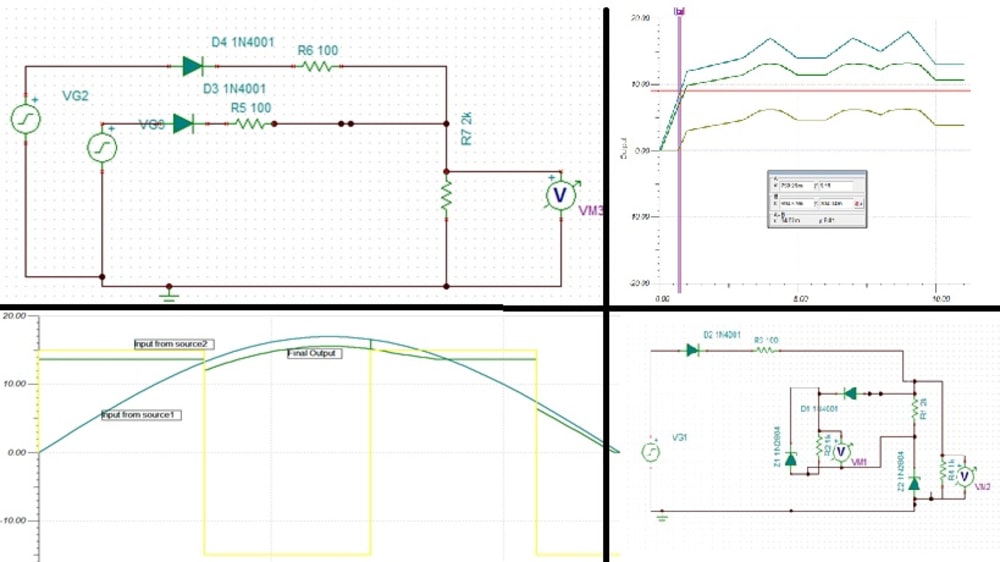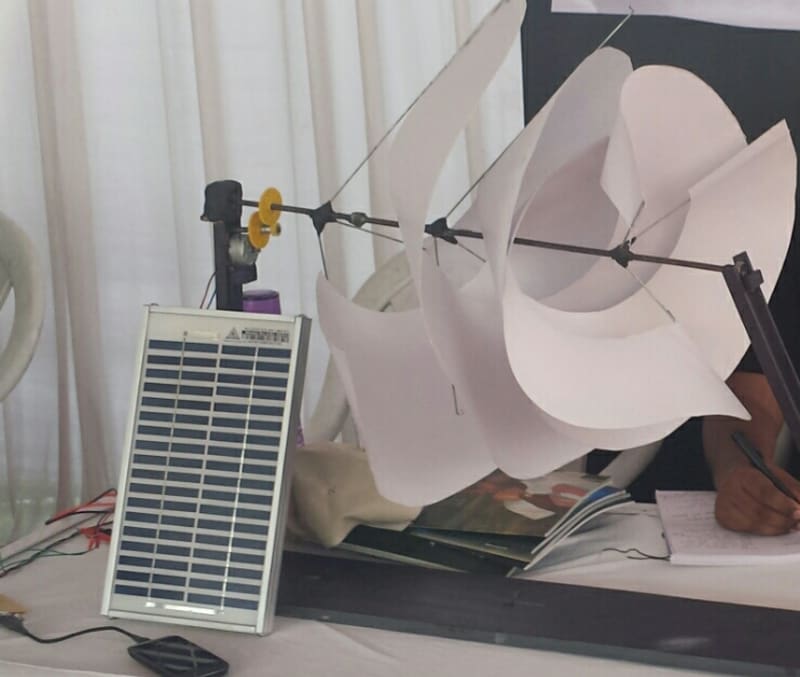Localization of power generation holds the key to the future. When I speak of localization it is not about bringing it down to a single establishment but bringing it down to a community, a locality or a village. A hybrid renewable energy system is a good example. What we have built is a Solar Wind Hybrid System. The details of the same are given below.
We have used a 17 Watt Solar Panel and a 5 Watt motor to make our system at a cost of 1200/- The circuit used to add the power generated in both the circuits is also added in the form of an image file.
The major innovation of our solar wind hybrid lies in the fabrication of the 3 blade logarithmic spiral design which was earlier fabricated using much costlier material. We have tried to use material which could be found in your daily hardware store. With this design and cost we are targeting the millions of villagers who still use conventional sources like oil, cow dung etc which add to the green house emissions.
The prototype in its present form is able to charge mobile phones (Smart Phones) and light LED lamps. We wish to expand and make a version which would be able to not only charge a mobile phone but power a house with all its appliances and it is for this reason we participate in the competitions (to garner funds). The prototype has been made without any support from any educational or industrial support. Other technical details are given below.
TINA: SPICE based analog simulation program:
TINA is an easy to use, powerful, circuit simulation tool based on SPICE engine that provides all DC, transient and frequency domain analysis of analog circuits. The circuit used to combine solar and wind powers has been designed and tested using TINA under worst possible conditions and verified to be working with satisfactory results.
Technical details of the circuit:
The circuit designed maintains the direction of current flow even if the direction of wind changes. The circuit adds the voltage generated by both sources and works even if one of the sources is disconnected or not generating any power. The circuit is theoretically tested to work at voltage levels up to 70V DC (1A) without any degradation in performance. Apart from scaling up, the circuit is made efficient by replacing normal rectifier diodes with Schottky diodes which consume less power because of their very low diffusion current values.
Benefits of localization of energy:
System being independent can give access to electricity for the many thousands of places which have no grid network like the villages and help in tackling issues like mass migration and suicide. Not only would we prevent transmission losses we would also promote renewable energy sources which will be a boost to R&D centres across the globe and would promote faster development.
In case of emergency situations the chances of blackout will be minimal as the generation of electricity will depend on that particular community.
Like this entry?
-
About the Entrant
- Name:Nishit Sangomla
- Type of entry:teamTeam members:Nishit Sangomla
Chepuri Gopi Krishna
Abhiroop Bhadra - Software used for this entry:TINA
- Patent status:none





